 |
330 GT Registry |
 |

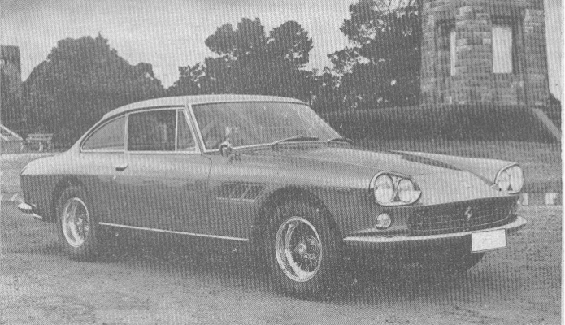
Ferrari 330 GT is an expensive car which looks expensive. Pininfarina was not
keen to fit twin headlights but Ferrari insisted.

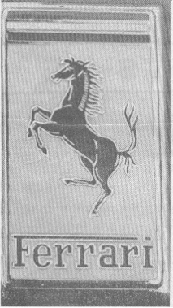 |
The man who made 1964’s world
champion |
|
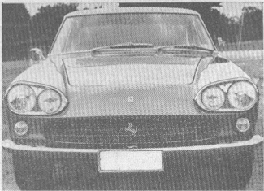 |
Sheer speed and brute power are suggested by the head-view but despite its power the Ferrari is as docile as a lamb. |
|
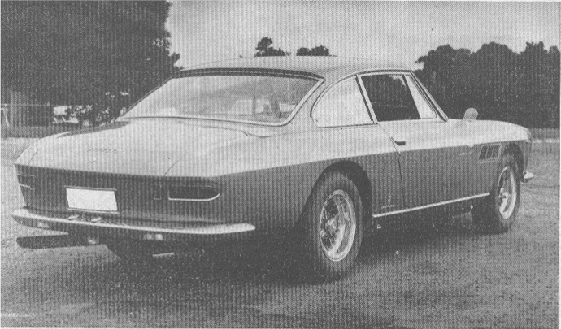
Lines at the rear are particularly attractive. Note the four
huge exhausts peeping out from under the bumper bar.
HEI contadino . . . which, with a typically derogatory digital gesture, means “Hello peasants” in Italian.
I know it betrays a lowly character fault to talk to loyal AMS readers like this, but, then, how many of them have driven a Ferrari. A beautiful, brand new, 153 mph, £8000 Ferrari 330 to be precise, and that kind of experience can affect a man for life.
How far is enough?
There’s something about a Ferrari that no other car on earth, bar a few exotic vintage machines, can match. Like world championships, Fangio, a V12 engine and the noise of 24 valves clanking up and down on the ends of pushers, pullers and assorted gears that would drive Heath Robinson mad with frustration.
Unfortunately the Ferrari 330 which Melbourne representative Ralph Lowe let me drive was brand new and this, together with the thought that some lucky capitalist was going to shell out £8000 of his hard-earned (the way they tell it) nicker, prevented me from driving the car very far or very fast.
But it was far enough — if any distance behind the wheel of a Ferrari is really far enough — to get an inkling of why drivers will pay so much money to go from point “A” to point “B”.
It’s not cheap to own
And it is a lot of money. One owner, who recently traded in his two-year-old Ferrari on a new one, cheer fully accepted his bargain, even though it meant that the car had depreciated at the amazing rate of £57 per week!
But let’s have a look at Ferrari’s 330.
Clothed in a sleek, typically Italian Pininfarina body, it’s long (l6ft. l.5in.), low (3ft. l0in.), and with its slanting,. oriental twin headlights and smooth, rather stubby tail, undoubtedly handsome. At over 27cwt. it’s heavy, but not enough to worry the 4-litre V12 engine unduly.
With one firing stroke every 60 degrees of crankshaft revolution the engine is uncannily smooth. Ralph Lowe tells the rueful story on himself about the time he took a prospective purchaser for a run, pleased him mightily and then found afterwards that one of the two distributors had not been working and the car had only been running on one six-cylinder bank.
Smooth acceleration
The 330 will accelerate smoothly from as low as 10 mph in fourth gear all the way up to its maximum in that gear of 125 mph. A party trick which never fails to impress anybody afraid of 300 brake horsepower and Ferrari’s sporting reputation is to take off in overdrive fourth from rest, with just a little clutch slipping, and majestically accelerate to the maximum of 153 mph in less time than many cars can manage their top speed going through the gears.
Using the gears as they should be used, the performance is startling. Acceleration from 0 to 100 mph takes a mere 15.4sec. From 0 to 100 mph and back to 0 again takes 22.5sec. If fourth gear only is used, the Ferrari will accelerate from 50 mph to 100 mph in just over l3sec.
V12 engine is well finished
If brute performance, no matter how silky, was the only method of judging a car, there would be many cars which could equal and even some that could possibly do better than the Ferrari.
But there’s more than that. Take the V12 engine. It must be one of the most handsome ever made. Three huge twin-choke Weber carburettors sit on top of black crackle-finish camshaft covers. Every piece of equipment which needs filling or adjusting is easy to get at, and the carburettors are said to be the simplest of all multi-choke units to tune.
To set things off there is heavy quilted sound-proofing attached to the bonnet, with chromed ribs that is better looking than the upholstery fitted to the seats of many cars..
Each bank, of engines operates virtually on its own. The car has two distributors and two coils feeding in the sparks, There are also two master cylinders for the brakes and two servo units so that only the front or rear brakes can fail at any one time. The petrol pump is mechanical, but a separate, manually controlled electric pump is fitted to pump up the fuel from the tank before starting and, I suppose, for use if the mechanical ‘unit. gives up ‘the ghost.
Body design is a masterpiece
 |
|
Plenty of attention has been paid to aerodynamics |
Pininfarina's body is a masterpiece of design. Sleek and wind-cheating and only 3ft. l0in, high, it still manages to find room for four people to sit inside in comfort in the s adjustable seats which Pininfarina builds into every car he makes.
It's obvious that the driver is the main person both Ferrari and his body-builder think about.
Lounging back in the bucket seat with the gear lever sitting just where he can grab it (it’s farther back in this model than in previous Ferraris), the driver faces a heavily upholstered black facia panel with no less than eight round dials.
Reading dials in a car which lopes along quite happily at 20 mph is quite a chore, but Pininfarina has made the job as easy as possible by having plain white figures on a plain black face.
Two large dials take care of the tachometer and speedometer (calibrated to a breath-taking 180 mph), and smaller ones indicate oil pressure, oil temperature, water temperature, amps, fuel level and the time of day.
The overdrive switch is located on a stalk jutting out from the steering column, as are the headlight dimmer and the horn. Switches for lights and other accessories are operated from a “piano key” panel in the centre of the facia. Above these are individual fresh air vents for driver and passenger.
|
FERRARI SPECIFICATIONS ENGINE: V12, overhead cam. Capacity: 3967 cc. Bore and Stroke: 77 x 71 mm. Compression Ratio 8.8 to 1. Output: 300 blip at 6600 rpm. Carburettors:
Three Weber twin-choke type 40 DFI. Gearbox: Four-speed all synchromesh with overdrive on
fourth. Front: Independent by wishbones, coil springs and anti-roll bar. Rear: Semi-elliptic leaf springs with coil-spring assisted
shock absorbers. Twin servo,
system. Track: Front, 4ft. un.; rear, 4ft. 6.5in.; length, l6ft. 1.5in.; width, 5ft. 6.5in.; height, Mt. l0in.; ground clearance, 4.75in.; turning circle, 44ft.; weight, 27 cwt.;
wheelbase, 81t. 8.2in. Maximum speed in gears at 6600 rpm: 1st, 50 mph; 2nd, 74 mph; 3rd, 100 mph; 4th, 125 mph; 4th ‘overdrive, 153 mph. Acceleration: 0-50, 5.6 secs.; 0-70, 9.8
sacs.; 0-100, 15.4 secs. |
The passenger looks after himself
At either end of the facia panel are individual heater controls for driver and passenger. Ferrari thinks that all the driver of one of his cars should do is drive—the passenger has to look after himself.
Ferraris have a reputation for being noisy. The under-bonnet padding and heavy insulation inside the car, which extends to a heavily but attractively quilted headlining, keeps the 330 from being unbearably noisy, but the car is still not the right kind of buy for anybody who is afraid of the deep-throated roar of the six carburettor throats when the driver plants his foot and the song of the 24 valves when revs approach the 6600 red line on the tachometer.
The Ferrari’s worm and roller steering and suspension is nothing out of the ordinary. Front suspension is in dependent by wishbones, coil springs and an anti-roll bar, and the rear is simply semi-elliptic leaf springs with small coils assisting the Koni shock absorbers.
With this in mind, driving the car is a revelation. The steering wheel’s “feel” of the road is such that the driver can feel a wheel run over a matchstick yet not get thrown off-course by a boulder.
Limited slip differential helps cornering
Handling is virtually neutral, although understeer and oversteer can be induced by varying the amount of the 300 bhp the driver calls on in a corner. A ZF limited slip differential allows the car to be driven strongly through a corner and accelerated hard out of it without fear of the dreaded sideslip.
Part of the car’s good handling is probably due to the Pirelli Cintura 205 x 15 tyres which put enough rubber on the road to support a tank.
Fuel consumption is around the 16 mpg range, but, as the owner of a Ferrari is unlikely to be bothered by the price of petrol and the tank holds almost 20 gallons, this is quite good considering the performance which goes with it.
Not many of us are ever likely to own a Ferrari, but if anybody wants a pinnacle to aim at it must be pretty close to the ultimate in keeping the Joneses in their place.
AMS
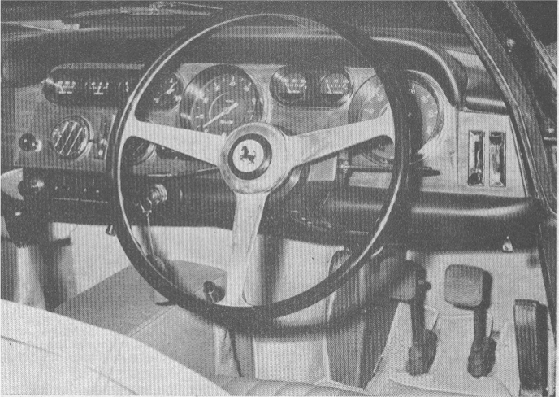
The £7950 view the owner gets from behind the wheel is
certainly impressive . . . but it’s functional.
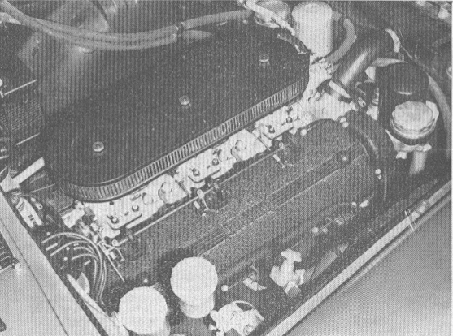 |
The Ferrari power |
AUSTRALIAN MOTOR SPORTS, January, 1965